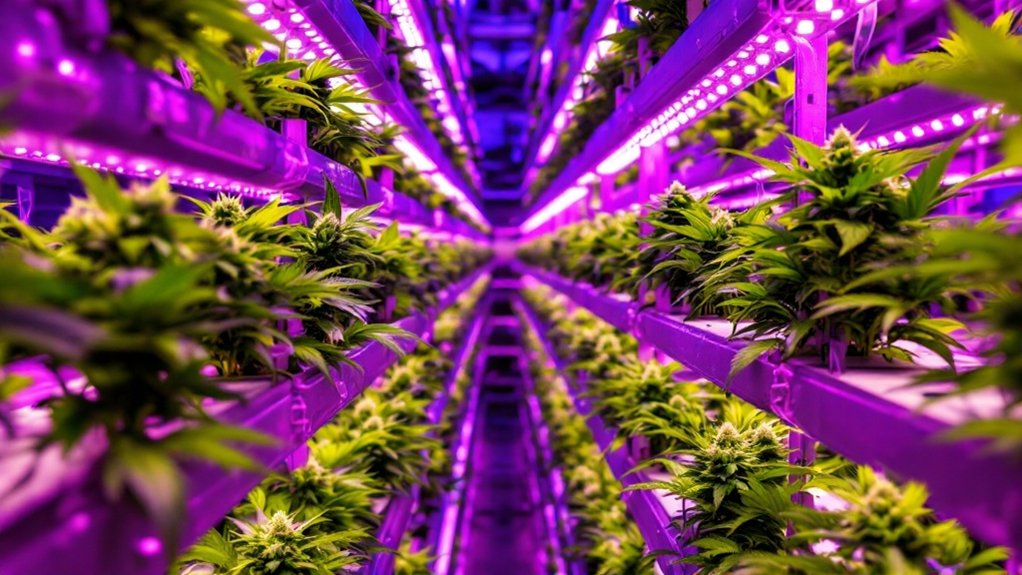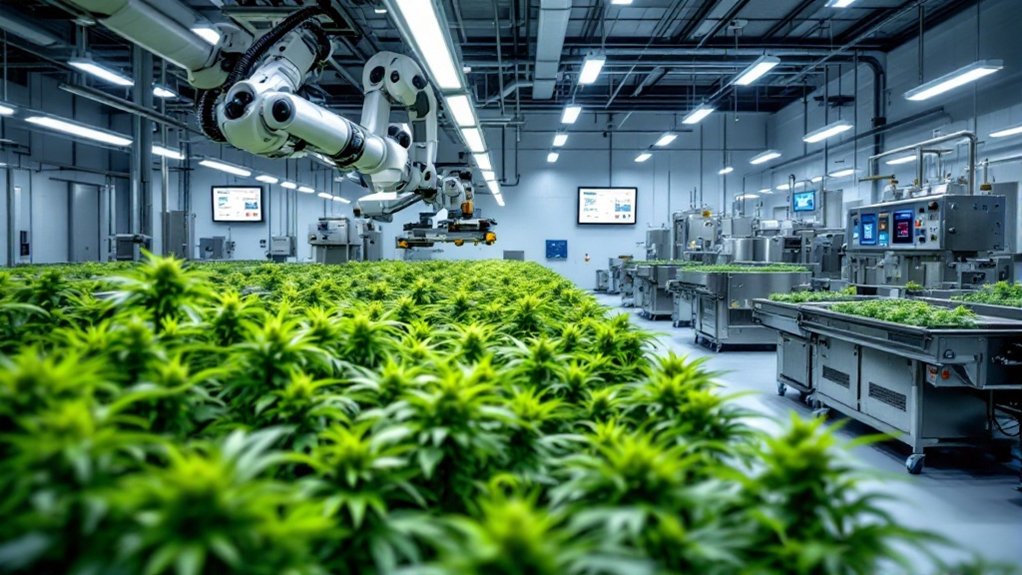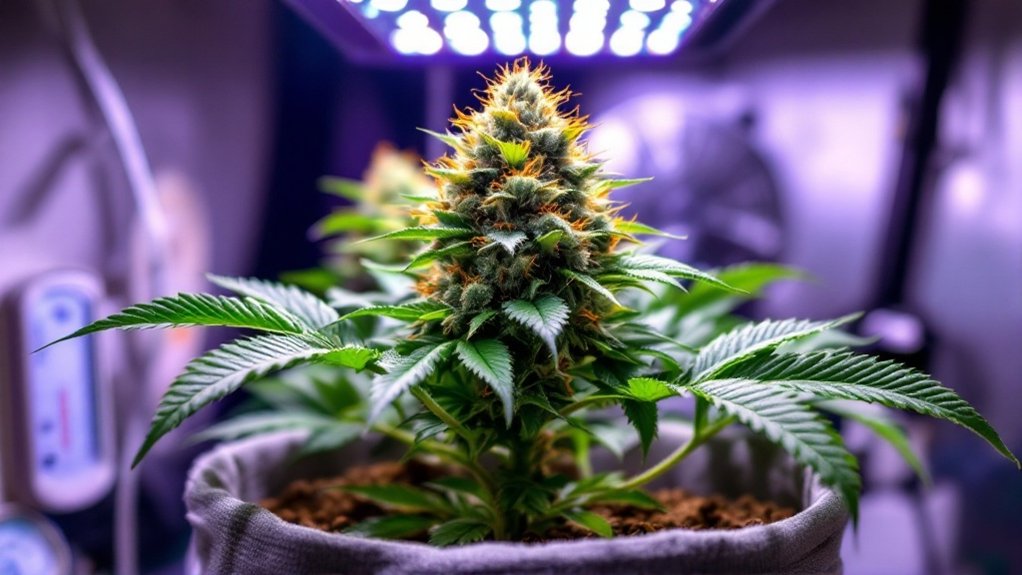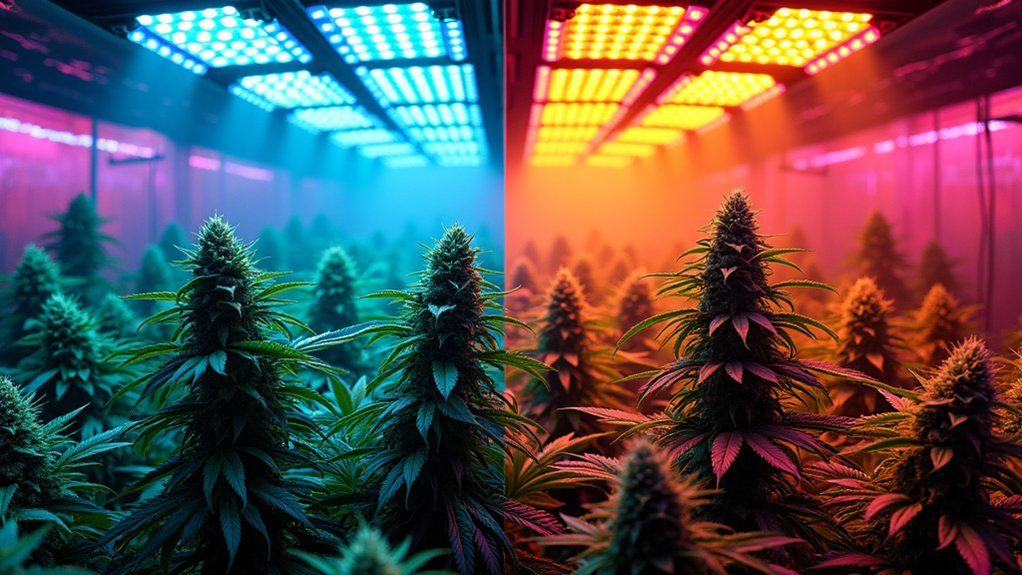Commercial vertical hydroponic systems triple plant density for cannabis cultivation – no warehouse expansion required. These setups utilize aeroponics, NFT, and deep water culture techniques while maximizing space with mobile carriages. LED lighting and engineered airflow prevent mold issues. Automation handles precise nutrient delivery, boosting productivity. Sure, upfront costs sting, but increased yields offset the investment. Modular designs allow phased expansion as profits grow. Space limitations? Problem solved.
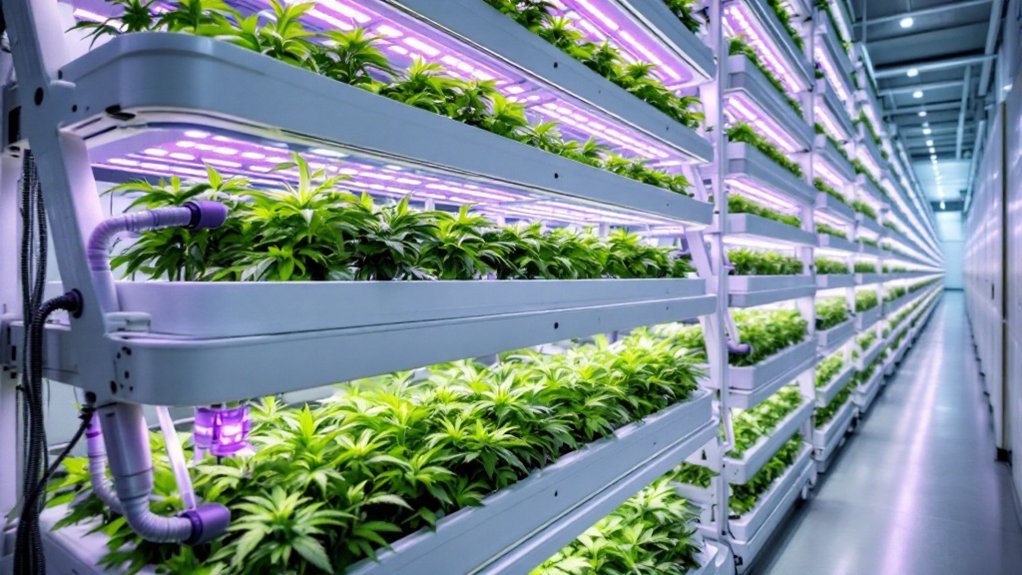
While traditional farming struggles with space limitations, commercial vertical hydroponic systems have emerged as the industry’s game-changer. Cannabis cultivators are ditching old-school methods and stacking their grow operations skyward. These multi-tier systems aren’t just fancy shelving, they’re production powerhouses that can triple plant density within existing footprints. No need to buy that expensive warehouse down the street when you can just grow up.
These systems employ various hydroponic techniques: aeroponics, nutrient film technique (NFT), and deep water culture. With the help of experienced Hydroponics Specialists, systems can be tailored to your specific cannabis cultivation needs. They’re not playing around with flimsy structures either. Robust racks support mature plants, lighting equipment, and water systems. Many utilize mobile carriages that eliminate fixed aisles, instantly doubling usable space. That’s right, 100% more growing area without adding a single square foot to your building.
Modern vertical systems don’t mess around, commercial-grade racks and mobile carriages instantly double your grow space without expanding your footprint.
Water conservation? Check. Closed-loop systems recapture, treat, and reuse runoff. Lighting efficiency? You bet. Strategically arranged LEDs maximize canopy exposure while keeping energy bills from skyrocketing. Airflow is engineered to prevent the dreaded mold and mildew issues that keep growers up at night. The automation of these systems creates precise nutrient delivery that significantly enhances plant growth and quality compared to soil-based methods.
Regulatory compliance isn’t optional in cannabis. These systems meet building codes and security requirements with reinforced construction and access control. Transparency matters, designs allow 360-degree visibility for required inspections. Materials are selected for fire resistance and easy cleaning. Officials keep changing the rules? The systems adapt.
Yes, upfront costs exist. They’re substantial. But do the math – increased productivity drastically reduces per-unit costs. Labor efficiency improves with ergonomic workflows. Water recycling slashes utility expenses. The modular nature allows phased expansion, grow your system as your business grows. Operations also benefit from integrated pest management systems that help maintain plant health and product quality.
For cultivators tired of maxed-out facilities and diminishing returns, vertical systems offer a solution without relocation headaches. Triple the plants, slash resource usage, and optimize every cubic foot of growing space. The cannabis industry is looking up, literally.
Frequently Asked Questions
What Is the ROI Timeline for a Vertical Cannabis Hydroponic System?
Vertical cannabis hydroponic systems typically see ROI within 2-4 years. That’s the industry standard. Not bad, really.
The timeline varies wildly depending on market conditions and management efficiency. Higher initial costs? Sure. But doubled yields per square foot and reduced operational expenses accelerate payback periods.
Well-run operations with premium products and strong demand can break even faster. Oversaturated markets? Different story. Your mileage may vary.
How Much Technical Expertise Is Required for System Maintenance?
Maintaining vertical hydroponic systems demands substantial technical know-how.
Staff need skills in automation, troubleshooting, and water chemistry. Daily pH monitoring. Weekly reservoir cleaning. Not exactly rocket science, but definitely not for technophobes either.
Systems require regular calibration of sensors, pump maintenance, and quick response to failures.
One clogged emitter? Crop damage follows. One pH imbalance? Plants suffer.
Technical training is non-negotiable for successful operation.
Which Cannabis Strains Perform Best in Vertical Hydroponic Systems?
Several cannabis strains dominate vertical hydroponic systems.
Northern Lights and White Widow lead among indica-dominants, boasting disease resistance and space efficiency.
Super Silver Haze and Amnesia Haze excel for sativas, maximizing vertical real estate with their natural structure.
Blue Dream and Gorilla Glue are commercial favorites – chunky buds, mold resistance, impressive yields.
Space efficiency matters.
Genetics with established stability perform predictably in controlled environments.
Disease resistance means less maintenance.
Are There Special Insurance Considerations for Vertical Growing Operations?
Vertical growing operations face unique insurance challenges.
Equipment breakdown coverage is essential, those high-tech systems aren’t cheap. Water damage risks skyrocket with multi-level hydroponic setups. Seriously, one leak could destroy everything.
Specialized crop insurance policies now cover cannabis plants from seed to sale, despite federal classification issues. Property insurance must address vertical space utilization, while higher plant density increases disease spread risk.
Workers’ comp? Non-negotiable with employees climbing ladders all day.
How Do Lighting Costs Compare to Traditional Growing Methods?
Vertical farming’s lighting costs? Initially brutal.
LED fixtures cost more upfront than traditional HPS lights used in soil grows. But here’s the kicker: they pay off.
LEDs use 30% less electricity, generate less heat (cutting AC costs by 35%), and don’t need annual replacement like those $60 HPS bulbs.
Factor in available rebates covering 20-70% of costs, and the 5-year math is clear.
Traditional growing’s “cheaper” setup? Not so cheap after all.
